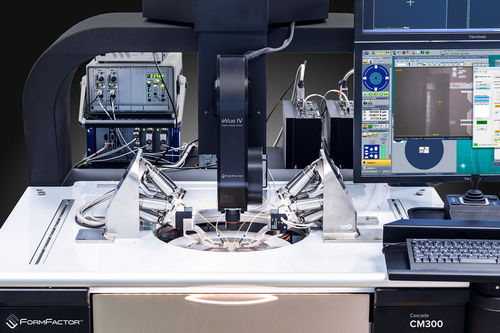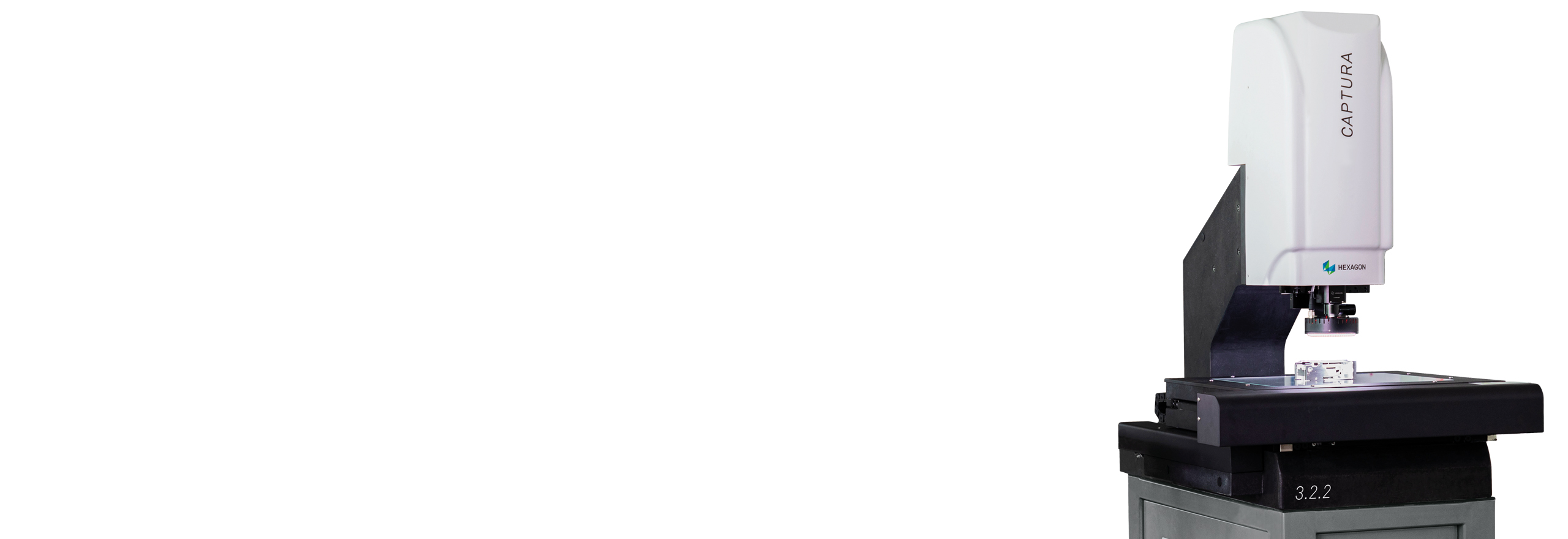Why optical measurement system integration leads to fewer recalls
The Role of Optical Dimension Solutions in Advancing Assessment Techniques
Optical dimension systems have changed assessment, bringing a level of precision that was when unthinkable. You may be amazed to learn how these technologies, based upon essential principles like reflection and disturbance, are applied throughout various markets. Their non-contact abilities not only boost precision but also simplify processes. As you discover better, you'll find exactly how these systems are shaping the future of dimension and high quality control.
The Evolution of Width: A Historical Viewpoint
As you discover the background of metrology, you'll discover that its evolution reflects mankind's quest for accuracy and standardization. From old human beings utilizing body parts as systems of dimension to the growth of standardized weights and procedures, each step shows our wish for precision. The Egyptians built the pyramids utilizing exact measurements, while the Romans advanced design with their advanced measuring devices.
During the Renaissance, scientific breakthroughs changed the focus toward a lot more empirical methods, leading the means for modern assessment. The intro of the metric system in the late 18th century marked a substantial landmark, developing global criteria. Throughout the 20th century, technological innovations additionally changed width, enabling extremely exact dimensions in various areas.
Today, metrology proceeds to progress, integrating electronic technology and automation. This history highlights not just the value of measurement but likewise our ruthless quest of boosting accuracy and uniformity in our significantly complex world.
Principles of Optical Measurement Systems
Comprehending the concepts behind optical measurement systems is necessary for exact cause width. You'll wish to take into consideration basic optical concepts, measurement accuracy factors, and reliable system calibration strategies. Each of these aspects plays a vital function in guaranteeing your dimensions are exact and reliable.
Essential Optical Principles
While exploring optical measurement systems, you'll experience essential optical principles that develop the foundation of exact information purchase. Light behaves in predictable ways, and recognizing these habits-- like diffraction, refraction, and reflection-- is necessary for reliable measurements. You'll use lenses and mirrors to adjust light and focus it onto your target, guaranteeing precision in your analyses. In addition, the wave nature of light enables interference patterns, which can enhance dimension resolution. Polarization can also play a vital role in distinct signal from noise, enhancing the clearness of your outcomes. By grasping these principles, you'll be furnished to take advantage of optical technologies successfully, leading the means for advancements in width and guaranteeing your measurements are both dependable and repeatable.
Measurement Accuracy Factors
To achieve high measurement precision in optical systems, several variables enter into play, affecting the integrity of your results. The high quality of the optical components matters substantially. High-grade lenses and detectors decrease aberrations and sound, guaranteeing your dimensions are accurate. Second, environmental conditions like temperature level and humidity can impact measurements, so preserving a steady environment is crucial. Third, the alignment of the optical system is crucial; also minor imbalances can bring about considerable errors. The wavelength of light made use of influences the resolution and accuracy of your dimensions. By attending to these variables, you can enhance the total performance of your optical measurement systems, causing more trustworthy and exact results in your width applications.
System Calibration Methods
Achieving high measurement precision is just part of the equation; appropriate system calibration techniques are equally vital in optical dimension systems. To assure your system supplies trustworthy results, you need to consistently adjust it using common reference materials. Begin by readjusting the optical parts, like lenses and mirrors, to reduce systematic errors. Next off, employ recognized measurements to confirm the system's result and make necessary corrections. It's also vital to make up ecological variables-- temperature and moisture can impact measurements. Apply a regular calibration routine to maintain uniformity in time. Document all calibration treatments and results; this will aid you track efficiency and resolve any kind of drift in accuracy. With these strategies, you'll enhance the dependability of your optical measurement system.
Secret Technologies Behind Optical Measurement
Optical measurement systems depend on a number of key technologies that enhance accuracy and efficiency in width. One crucial modern technology is interferometry, which makes use of the disturbance of light waves to determine small displacements and surface irregularities with extreme accuracy. You'll additionally locate laser scanning systems, which record in-depth 3D data of things swiftly, making them important for dimensional analysis.
In Addition, CCD and CMOS sensing units play a significant duty in converting light right into electrical signals, enabling for high-resolution imaging and accurate dimensions. Advanced algorithms for photo handling even more improve measurement precision by assessing information in real time, filtering system out noise and boosting functions.
Finally, optical fiber offer adaptability and the capacity to measure in tough environments while keeping signal stability. By leveraging these innovations, you can achieve premium lead to your width tasks, guaranteeing that your measurements are both dependable and exact.
Applications of Optical Dimension in Industry
As markets progressively require accuracy and performance, the applications of optical measurement systems have actually become vital across different sectors. In production, these systems help you monitor measurements and tolerances in real-time, making sure high quality control without taxing manual checks. In the auto sector, optical dimensions aid in straightening elements with accuracy, enhancing safety and performance.
In electronics, you're using optical techniques to inspect min functions on circuit boards, spotting issues that can lead to failures. The aerospace industry take advantage of non-destructive testing methods, permitting you to examine products and elements without jeopardizing their honesty.
Optical dimension additionally plays a vital duty in fabrics, guaranteeing fabric dimensions meet specific specs. optical measurement system. With their ability to supply high-resolution information quickly, these systems empower you to make informed choices, improve processes, and ultimately drive technology across your industry
Enhancing Accuracy and Effectiveness in Measurements
When you consider improving accuracy in measurements, accuracy in your measurement strategies is crucial. By improving these procedures, you can attain quicker results without sacrificing top quality. Allow's explore exactly how adopting sophisticated optical dimension systems can raise both accuracy and efficiency in your job.
Accuracy in Measurement Methods
Precision in dimension methods is crucial for attaining reputable lead to assessment, specifically given that tiny disparities can result in significant errors. By utilizing advanced optical measurement systems, you can improve the accuracy of your dimensions. These systems supply high-resolution data that help you identify even the smallest variants in dimensions. You reduce uncertainties and boost repeatability in your procedures when you adopt these innovations. On top of that, specific measurements allow you to keep quality assurance, guaranteeing that products meet rigid specifications. This not just boosts your integrity but likewise improves customer fulfillment. Spending in precision measurement devices ultimately causes increased effectiveness, decreased waste, and enhanced manufacturing cycles. Embracing these techniques will certainly transform your approach to metrology, yielding remarkable results.
Streamlining Measurement Procedures
To improve accuracy and efficiency in measurements, simplifying your dimension procedures is essential. Start by embracing optical dimension systems that offer real-time information, reducing the time spent on hand-operated recording. These systems typically incorporate seamlessly with existing software application, enabling you to automate information collection and analysis.
Following, systematize your measurement protocols. By applying consistent treatments, you minimize variability and enhance repeatability. Do not neglect to on a regular basis adjust your devices to assure its precision.

The Influence of Optical Dimension on R & D
As researchers venture to push the boundaries of technology, optical dimension systems have ended up being vital tools in the advancement procedure. These systems give you with exact, real-time information that boosts your capability to assess complex materials and frameworks. In numerous fields, from biotechnology to aerospace, you count on optical dimensions to enhance layouts and enhance item efficiency.

With high-resolution imaging and non-contact techniques, you can minimize example disturbance, permitting more precise outcomes. This ability to capture minute details increases your R&D cycle, letting you repeat styles swiftly and effectively. Optical dimension fosters cooperation throughout self-controls, as the information created is commonly quickly interpretable and shareable.
Inevitably, integrating optical measurement systems into your research study not just enhances performance but also deepens your understanding of the phenomena you research. By leveraging these hop over to these guys advanced strategies, you're much better outfitted to introduce and stay ahead in an affordable landscape.
Future Trends in Optical Dimension Equipments
With the quick development of technology, you're likely to see considerable shifts in optical measurement systems that will certainly redefine their application throughout numerous industries. You'll discover an action toward enhanced automation and combination of synthetic intelligence, permitting real-time data evaluation and improved precision. Miniaturization is an additional fad; compact devices will make it possible for dimensions in tighter areas, making them optimal for fields like aerospace and biomedical applications.
Anticipate to see systems that can operate in tough settings, offering reputable visit their website dimensions in severe problems. As these innovations converge, you'll find that optical measurement systems not only enhance accuracy however likewise simplify process, ultimately driving advancement and effectiveness in your tasks.
Often Asked Questions
How Do Optical Measurement Equipments Contrast to Traditional Measurement Techniques?
Optical measurement systems supply higher precision and faster results compared to standard techniques. You'll discover they record even more information points accurately, minimizing human error and increasing reliability, making them a favored selection in different applications.
What Industries Advantage A Lot Of From Optical Measurement Solutions?
You'll locate sectors like aerospace, automobile, and electronic devices benefit most from optical measurement systems. These industries depend on exact measurements to ensure high quality and efficiency, enhancing effectiveness and reducing expenses via innovative modern technology.

Are Optical Dimension Equipments Expensive to Implement?
Optical measurement systems can be pricey to implement, but their accuracy and performance commonly justify the price. Buying such technology can result in considerable long-term cost savings and improvements in top quality throughout numerous applications.
What Skills Are Needed to Operate Optical Measurement Solutions?
To operate optical measurement systems, you'll need strong analytical abilities, attention to detail, and effectiveness in software program devices. Familiarity with optics and an understanding of measurement principles will also enhance your effectiveness and effectiveness.
How Do Environmental Elements Affect Optical Measurements?
Environmental variables like air, temperature, and humidity high quality can misshape optical measurements. You'll notice variants in precision because of light interference or refraction. optical measurement systems. Preserving steady conditions is vital for trusted and accurate optical dimension outcomes
Final thought
In recap, optical measurement systems are changing width by giving unrivaled accuracy and performance. By utilizing sophisticated concepts and innovations, these systems enhance accuracy while minimizing interruptions in various sectors. As you discover future trends, you'll see just how the integration of AI and automation will remain to boost measurement practices, driving development and boosting high quality control. Welcoming these innovations will be necessary for check my blog staying affordable and attaining quality in your field.
Accomplishing high dimension accuracy is only part of the equation; proper system calibration methods are equally essential in optical dimension systems.When you assume concerning improving precision in dimensions, accuracy in your dimension strategies is important. By using sophisticated optical measurement systems, you can enhance the accuracy of your dimensions.To improve accuracy and efficiency in measurements, streamlining your measurement processes is essential. How Do Optical Dimension Solutions Compare to Traditional Measurement Techniques?